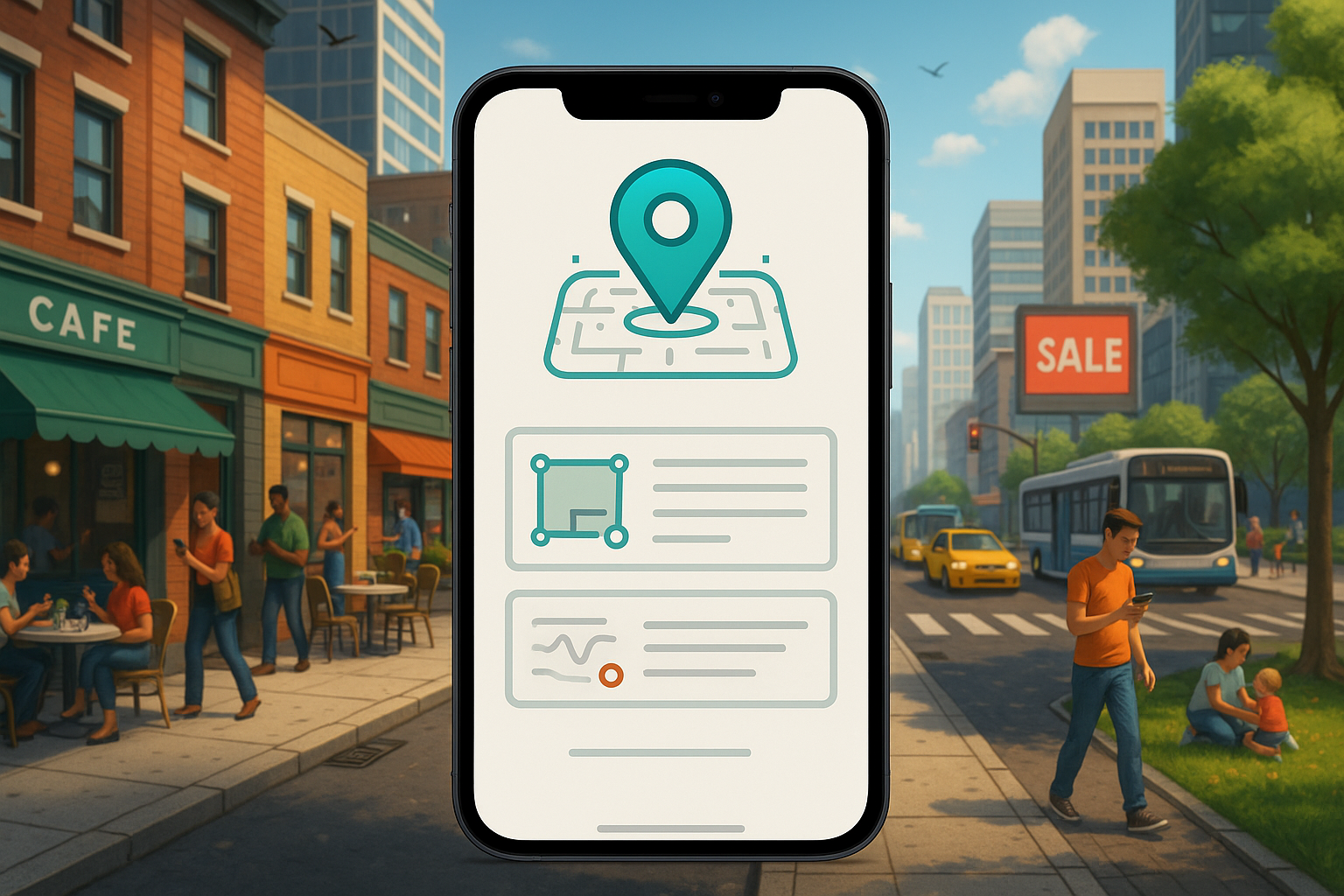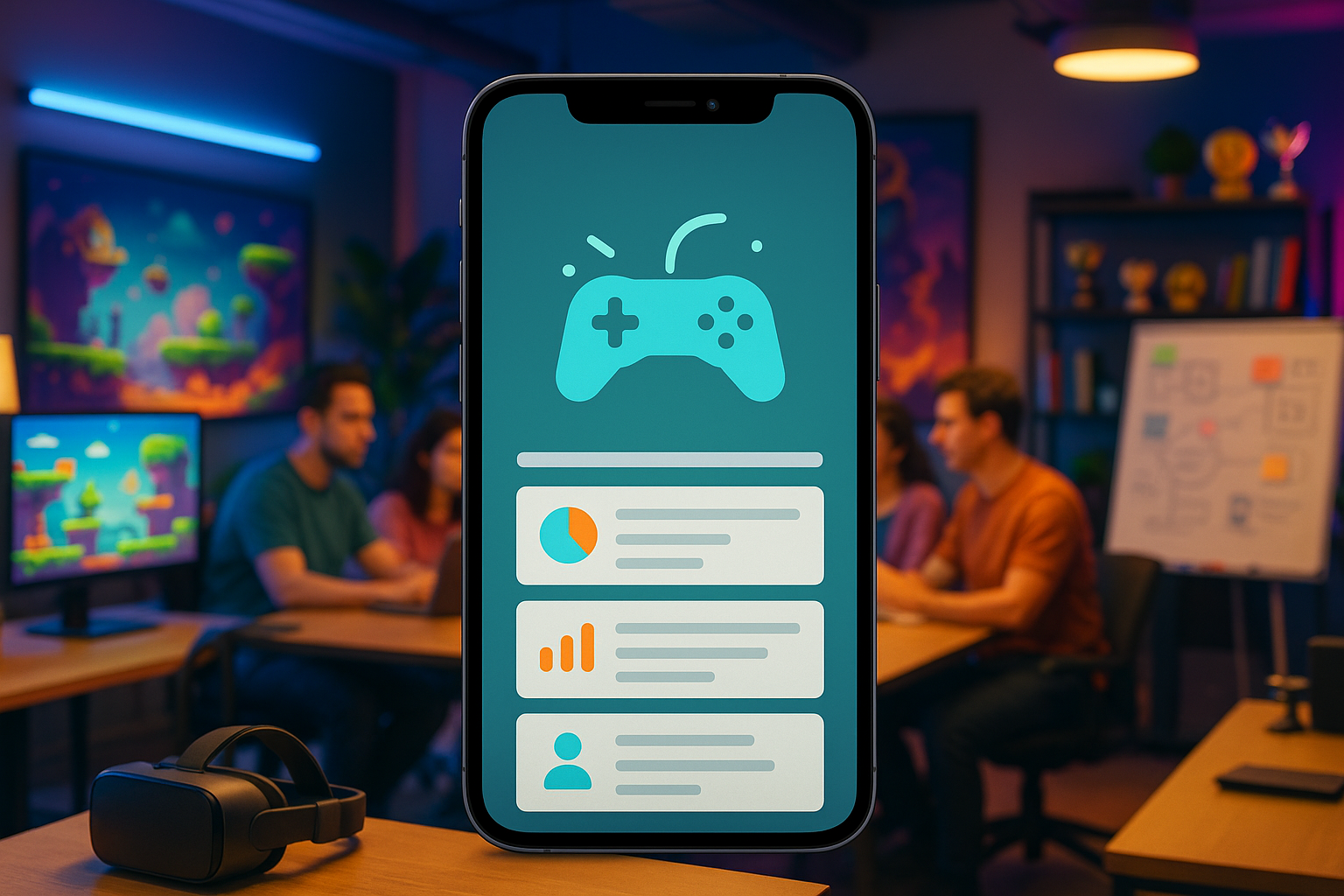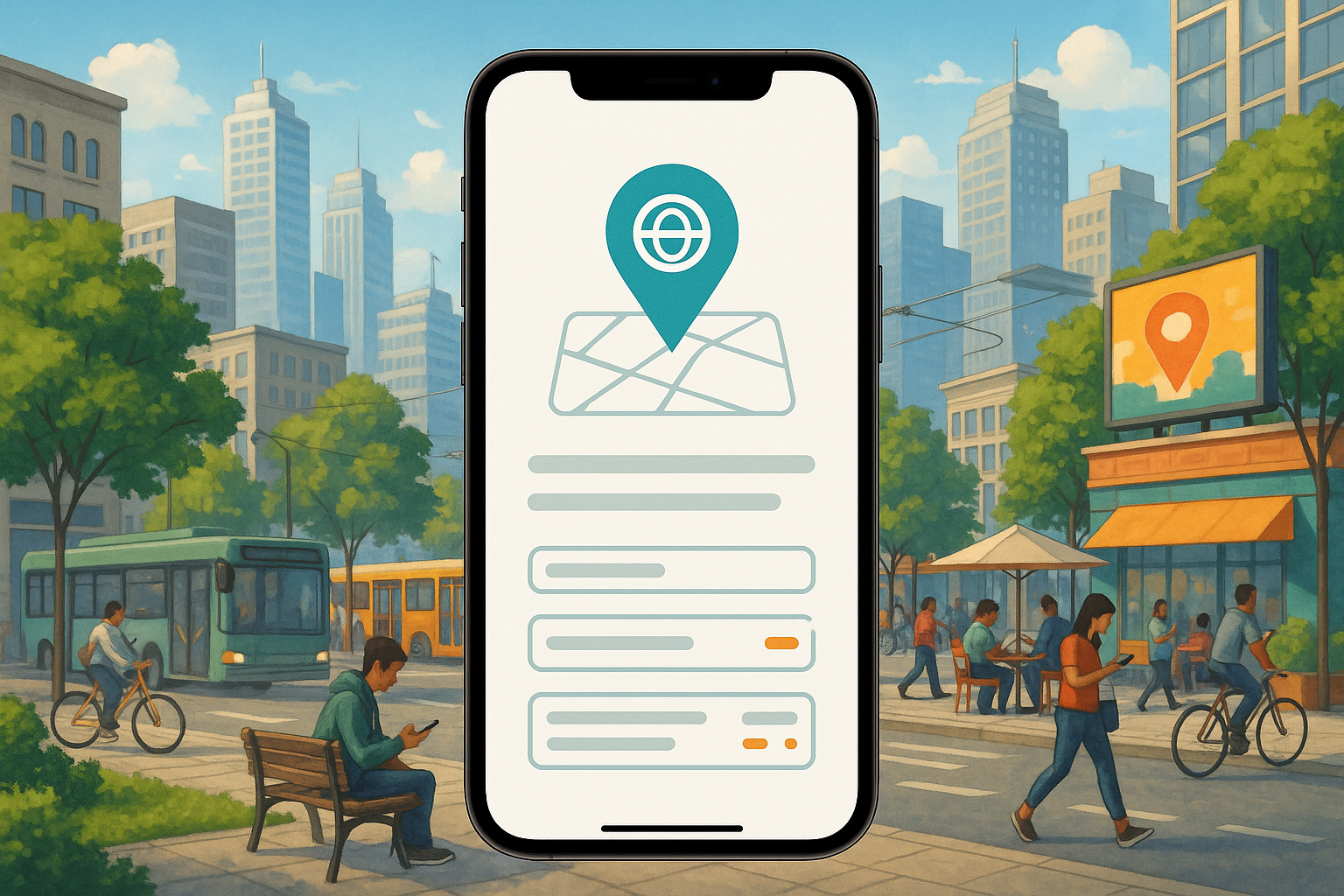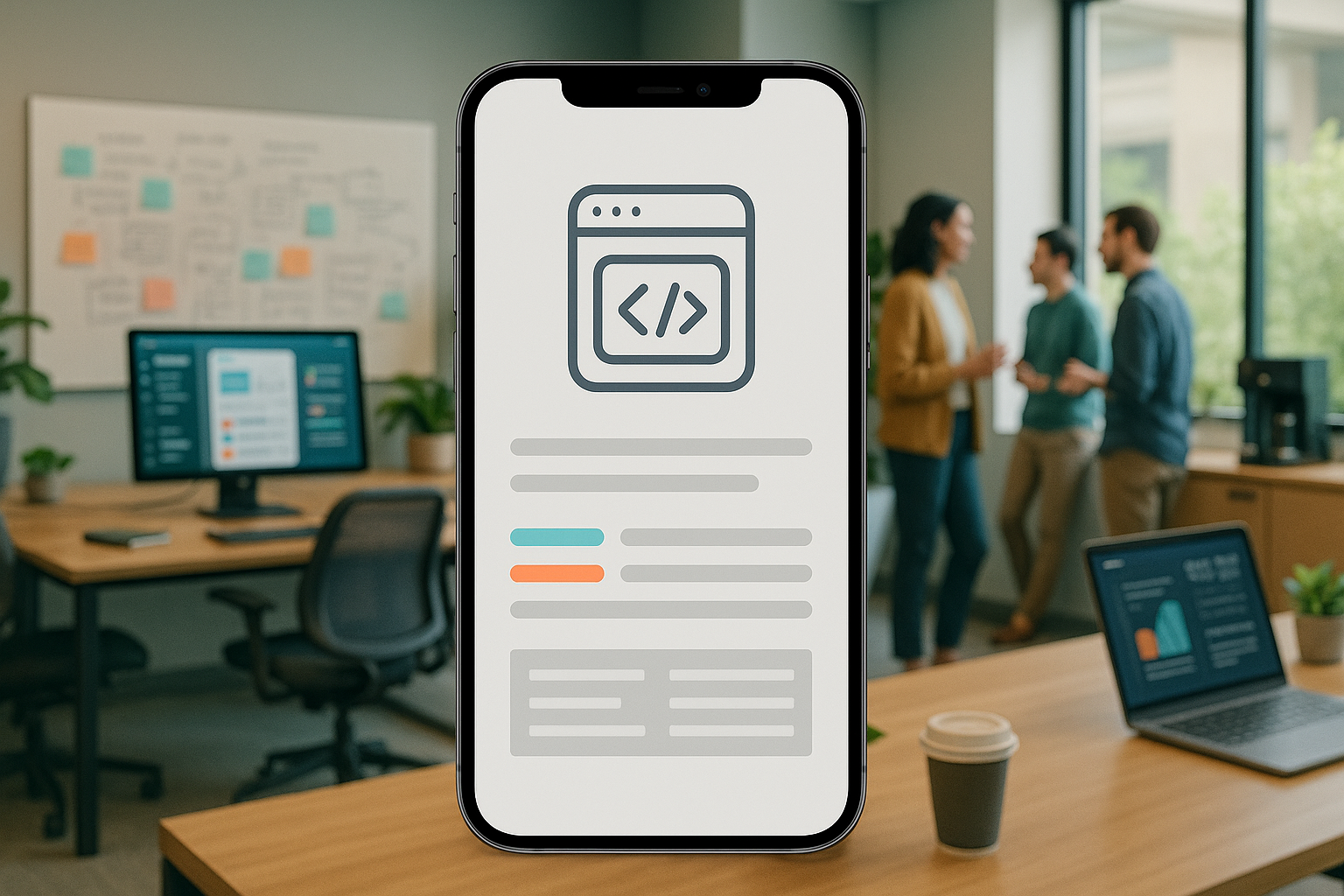Introduction
In today’s hyper-competitive digital marketplace, connecting with your audience at the right moment is the difference between being noticed and being ignored. Geofencing technology offers a powerful solution, enabling businesses to engage users based on their real-world location with uncanny precision. Imagine sending a special offer to a customer as they walk by your store, or notifying a traveler of available transportation the moment they step off a plane. The potential is immense, but so are the challenges.
Developing a robust geofencing application is a deceptively complex endeavor. The process is notoriously tech-heavy, demanding a seamless fusion of sophisticated geofencing software and consistently reliable location services. A failure at any point in this intricate chain can lead to a dysfunctional app, a frustrated user base, and a squandered investment. Many businesses with brilliant ideas find themselves stalled by these unforeseen technical hurdles.
This article serves as a comprehensive guide to navigating the world of geofencing app development. We will demystify the technology, explore its powerful applications, and provide a transparent look at the difficulties and costs involved. Most importantly, we will show you how to overcome these challenges by partnering with the right experts. As a top US AI-powered app development firm, we at MetaCTO have spent over two decades turning complex technological concepts into successful, market-ready mobile applications. We understand the intricacies of geofencing from concept to launch and beyond, and this guide will share that expertise to help you make informed decisions for your business.
What is a Geofencing App?
At its core, a geofencing app is a location-aware application that uses Global Positioning System (GPS), Wi-Fi, or cellular data to trigger a pre-programmed action when a mobile device enters or exits a virtual geographic boundary, known as a geofence. This isn’t just about tracking a dot on a map; it’s about creating a dynamic bridge between the digital world of your application and the physical world your customers inhabit. When a user crosses one of these invisible lines, the app can send a push notification, deliver targeted content, trigger an ad, or even collect location-based analytics.
The power of this technology is best understood through real-world examples from leading brands that have mastered its implementation.
Driving Sales with Hyper-Personalized Marketing
Retail and food service brands have become pioneers in using geofencing to drive foot traffic and increase sales.
-
Starbucks is a quintessential example. The coffee giant commonly sends push notifications to app users when they walk by a business location or are within a nearby area. This simple reminder can be incredibly effective. They take it a step further with time-sensitive promotions; on happy hour Thursdays, users who enter the geofence receive a special push notification about the deal, creating a sense of urgency and opportunity. The true genius of Starbucks’ strategy lies in its personalization. The company sends personalized app notifications tailored to individual habits. If a user’s order history shows a preference for a mocha Frappuccino, Starbucks can send a geofenced notification specifically enticing them to grab that favorite drink, making the marketing message feel less like an ad and more like a helpful suggestion.
-
Dunkin’ employs similar strategies to great effect. Users who have the Dunkin’ app receive notifications with exclusive deals for drinks and food when they enter a store’s geofence. Beyond simple notifications, Dunkin’ has also leveraged geofencing for creative brand engagement. For National Donut Day, the company launched a unique Snapchat campaign. When users were inside the geofence surrounding a Dunkin’ location and opened Snapchat, they gained access to a special filter featuring a giant sprinkle donut. This gamified experience not only delighted users but also drove them physically into the store to participate, demonstrating a clever fusion of location, social media, and marketing.
Enhancing User Experience in On-Demand Services
Geofencing is not just for retail promotions. It is a critical component for on-demand services, where timeliness and context are paramount.
- Uber provides a classic case study in logistical excellence. When a user gets off a plane at an airport, the app can detect their arrival within the airport’s geofence. Uber then proactively sends a push notification, letting the traveler know that drivers are available nearby to take them to their final destination. This eliminates the friction of having to remember to open the app, search for a ride, and navigate the airport pickup system. The app anticipates the user’s need and presents a solution at the exact moment it becomes relevant, creating a seamless and highly positive user experience.
Innovating in Recruitment and Human Resources
The utility of geofencing extends even further, into specialized fields like corporate recruiting.
- Johns Hopkins Hospital utilized geofencing in a highly strategic way to find qualified candidates for open job opportunities. Instead of relying solely on broad job board postings, they created geofences around specific locations where potential candidates were likely to be, such as competing medical facilities or industry conferences. They then used this location data to create highly targeted social media ads that would appear in the newsfeeds of qualified users on platforms like Facebook and LinkedIn when they entered these zones. This approach allowed the hospital to focus its recruitment budget with surgical precision, reaching the right people in the right place, and showcasing the innovative application of geofencing for talent acquisition.
Reasons that it is difficult to develop a Geofencing app in house
While the use cases are compelling, the journey from concept to a functional geofencing app is fraught with technical difficulties. Many organizations underestimate the complexity, assuming it is a simple feature that can be bolted onto an existing application. In reality, building a reliable geofencing system requires deep expertise in mobile development, backend architecture, and location technologies. Here are the primary reasons why in-house development often proves so challenging.
The System is Inherently “Tech-Heavy”
The statement that “setting up and keeping a geofencing system running can be tech-heavy” is a significant understatement. A proper implementation is far more than just writing a few lines of code in the app. It involves a multi-layered technology stack that must be designed, built, and maintained in perfect harmony.
This stack includes:
- A Robust Backend: You need a server-side component to create, store, and manage the geofences themselves. This isn’t a static list; businesses often need a dashboard to dynamically add, edit, and remove geofences (e.g., for new store locations or temporary event-based marketing). This backend also processes the trigger events sent from the mobile devices and orchestrates the resulting actions, like sending a push notification through services like Apple Push Notification Service (APNS) or Firebase Cloud Messaging (FCM).
- An Efficient Mobile Client: The code within the mobile app must constantly but efficiently monitor the user’s location without causing excessive battery drain—a notorious problem that can cause users to uninstall an app immediately. It must be able to handle dozens or even hundreds of geofences simultaneously and communicate reliably with the backend server.
- Ongoing Maintenance and Updates: The world of mobile technology is in constant flux. Apple and Google frequently release new versions of iOS and Android with updated policies on location access, background processing, and user privacy. A geofencing system that works perfectly today could be broken by an OS update tomorrow. An in-house team must dedicate significant resources to ongoing maintenance, testing, and redevelopment just to keep the system functional, diverting focus from new feature development.
The Intricate Dance of Software and Services
A core challenge lies in the fact that a “geofencing system requires geofencing software and location services to work together.” This integration is the heart of the operation and its most common point of failure.
The “geofencing software” is the custom logic you build—the rules engine that defines what happens when a boundary is crossed. The “location services” are the native frameworks provided by the mobile operating system (e.g., Core Location on iOS, Location Services on Android). Your custom software does not control the location data directly; it can only request it from the OS.
This creates a delicate dependency. Your app must correctly:
- Request Permissions: Politely and clearly ask the user for location access, explaining why it’s needed, in a way that complies with ever-stricter platform guidelines.
- Configure the Service: Choose the right level of accuracy versus battery consumption for your specific use case. Do you need high-precision GPS, or is lower-precision (but more battery-friendly) network-based location sufficient?
- Handle OS Limitations: The operating system, in its quest to preserve battery life, may delay or batch location updates, especially when your app is in the background. Your code must be resilient enough to handle these inconsistencies without failing to fire a critical trigger.
Getting this integration wrong can lead to an app that misses geofence entries, drains the user’s battery in hours, or simply crashes. This is a level of complexity that requires specialized knowledge, which is why many companies seek our Custom Mobile App Development services to ensure it’s built right from day one.
The Unpredictability of Location Reliability
Ultimately, the performance of your entire system is at the mercy of a single, crucial factor: geofencing accuracy largely depends on location service reliability. This reliability is not a constant. It can fluctuate wildly based on the user’s environment and device.
Location data on a mobile device is typically derived from three main sources:
- GPS: Extremely accurate (often within a few meters) but requires a clear line of sight to satellites. It works poorly indoors, in dense “urban canyons,” or during heavy cloud cover, and is the most power-hungry option.
- Wi-Fi Positioning: Uses a database of known Wi-Fi access points to determine location. It can be very accurate in populated areas but is less effective in rural settings or new developments.
- Cell Tower Triangulation: Determines location based on proximity to nearby cell towers. It is the least accurate method but uses the least battery and works almost anywhere there is a cell signal.
A well-built geofencing app must intelligently manage these sources. More importantly, it must be designed to cope when the data is poor. What should the app do if the location accuracy suddenly drops from 10 meters to 1000 meters? Should it still fire the notification for a coffee shop? An expert development team builds in logic to assess the quality of the location data before acting on it, a nuance often missed by teams new to the technology. This is precisely the kind of problem that can halt a project, often leading clients to engage us for a Project Rescue to get their development back on track.
Key Use Cases for Geofencing Applications
While the technical hurdles are significant, the diverse and powerful applications of geofencing make it a worthwhile investment when executed correctly. The technology is remarkably versatile, capable of driving value across marketing, logistics, and even human resources. The key is to match the capability of geofencing to a specific business goal.
Hyper-Local Marketing and Customer Engagement
This is the most well-known application of geofencing, focused on influencing customer behavior in the physical world. The strategies employed by Starbucks and Dunkin’ are prime examples of how to do this effectively. The goal is to deliver a message so relevant and timely that it feels like a service rather than an advertisement.
These marketing efforts can be segmented into several layers of sophistication:
- General Awareness: The simplest form is a notification triggered by proximity, such as the general “Welcome to Starbucks” message a user might receive. This serves as a top-of-mind reminder that can capture impulse buys.
- Promotional Triggers: A more direct approach involves tying the geofence to a specific deal, like Starbucks’ happy hour notifications. This creates a powerful call to action by combining location with a time-sensitive offer, motivating an immediate visit.
- Personalized Nudges: The most advanced strategy, as seen with Starbucks’ personalized Frappuccino offer, uses a combination of the user’s location and their historical data. This level of personalization transforms the interaction from a generic broadcast into a one-to-one conversation, dramatically increasing the likelihood of conversion.
- Interactive Experiences: Dunkin’s National Donut Day Snapchat filter demonstrates a highly creative use case. It turned the physical store into a digital playground. This strategy moves beyond simple notifications to create a memorable brand experience that encourages user-generated content and social sharing, amplifying the campaign’s reach far beyond the initial user.
On-Demand Services and Logistics
In the world of on-demand services, geofencing is not a marketing tool but a core component of the product’s functionality. It is the invisible engine that makes the service feel intuitive and effortless.
Uber’s use of geofencing at airports is the perfect illustration. The moment a user, and their device, crosses the virtual boundary of the airport, the app anticipates their immediate need for ground transportation. The push notification they receive is not an ad; it is the first step in a seamless service interaction. This proactive engagement does several things:
- Reduces User Friction: The user doesn’t have to remember to open the app, navigate menus, and confirm their pickup location. The app does the heavy lifting.
- Enhances Perceived Intelligence: The app appears “smart” and context-aware, building user trust and loyalty. It understands the user’s situation and offers a direct solution.
- Improves Operational Efficiency: By knowing a user has landed, Uber can better predict demand at airport pickup zones, helping to manage driver supply more effectively.
Targeted Recruitment and Human Resources
One of the most innovative applications of geofencing lies outside of traditional customer-facing scenarios. The Johns Hopkins Hospital case study proves its value as a strategic tool for highly specialized B2B or administrative functions like recruitment.
The strategy is brilliant in its efficiency. Instead of paying for broad ad impressions on platforms like LinkedIn or Facebook, the hospital was able to:
- Define a Hyper-Targeted Audience: They weren’t just targeting “nurses” or “doctors.” They were targeting qualified professionals who were physically present at locations indicating they were part of the desired talent pool (e.g., rival hospitals, medical schools, or major industry conferences).
- Maximize Ad Spend: By serving ads only to individuals within these carefully selected geofences, they ensured that virtually every dollar of their ad budget was spent reaching a relevant potential candidate. This is a level of targeting that is impossible with traditional demographic or interest-based advertising alone.
- Gain a Competitive Edge: This approach allows an organization to discreetly and directly poach talent or advertise opportunities to professionals who may not be actively looking for a new job but are open to compelling offers presented at the right time.
Cost estimate for developing a Geofencing app
A common question from businesses is, “How much will it cost to develop a geofencing app?” The answer is not a single number, as the cost is directly tied to the project’s scope, complexity, and whether you are building from scratch or integrating into an existing platform. However, we can break down the factors that influence the overall investment.
First and foremost, if your business does not yet have a mobile app, you will naturally “incur costs if businesses do not have an app developed and businesses want one.” This foundational development represents the largest portion of the budget. Before you can even consider geofencing, you need a fully functional, well-designed, and stable application for both iOS and Android.
At MetaCTO, we recognize this can be a daunting initial investment. That’s why we champion a lean approach with our Rapid MVP Development service. We can help you launch a streamlined version of your app in 90 days or less. This Minimum Viable Product can include the core geofencing feature, allowing you to test your concept with real users, gather valuable feedback, and validate the business model before committing to a larger-scale build.
For businesses that already have an application, the cost is associated with the integration itself. It is crucial to understand that “it costs time and effort to add geofencing to an app.” This is not a simple plugin or a feature that can be enabled with a switch. The “time and effort” are consumed by several critical development phases:
| Development Phase | Description of Work |
|---|---|
| Product Strategy & UX/UI Design | This initial phase involves defining the entire user experience. Where will the geofences be located? What specific action will trigger a notification? What will the notification say? How will the user manage their permissions? Designing a flow that is both effective and non-intrusive requires careful planning. |
| Backend Architecture | As discussed earlier, a scalable backend must be built to manage the geofence data, process triggers, and integrate with push notification services. This involves database design, API development, and server setup and configuration. |
| Mobile App Integration | This is the most intensive part of the integration. Developers must write native code for both iOS and Android to interface with their respective location services. This includes handling permissions, configuring accuracy levels, optimizing for battery performance, and thoroughly testing background processing. |
| Quality Assurance & Testing | Testing a geofencing feature is uniquely challenging. It cannot be fully simulated in an office. It requires extensive real-world “drive testing” with multiple devices in various environments (urban, suburban, indoor, outdoor) to ensure the triggers fire reliably and accurately. |
The total cost, therefore, is a direct function of this invested time and effort. A simple geofence that triggers a generic welcome message is less complex—and thus less costly—than a sophisticated system like Starbucks’ that integrates with user data for personalized offers. The investment should be viewed in the context of its potential return: increased customer engagement, higher conversion rates, and a tangible competitive advantage.
Top Geofencing App Development Companies
Choosing the right development partner is the single most important decision you will make when embarking on a geofencing project. You need a team with proven experience in location-based services and a track record of launching successful, complex mobile applications.
1. MetaCTO
As a premier, US-based AI-powered mobile app development agency, we position ourselves as the ideal partner for businesses looking to build, grow, and monetize with geofencing technology. With over 20 years of app development experience and more than 120 successful projects launched, our team has the deep technical expertise required to navigate the complexities of geofencing and deliver a product that exceeds expectations.
What truly sets us apart is our holistic, end-to-end approach to app development, which we call our Build, Grow & Monetize framework. We don’t just write code; we partner with you at every stage of the journey:
- Validate: We start by turning your idea into a tangible product strategy and a rapid MVP. This allows you to test the core geofencing functionality in the real world, gather user feedback, and prove your concept to stakeholders and investors quickly and cost-effectively.
- Build: Our expert team handles the entire development process—from backend architecture and UX/UI design to the intricate mobile integration of location services. We build robust, scalable applications that are market-ready and provide a seamless experience from day one.
- Grow: Launching the app is just the beginning. We use advanced analytics and A/B testing to optimize the performance of your geofencing campaigns. We help you understand which notifications drive the most engagement and how to refine your strategy to build a loyal and active user base. Our expertise in App Store Optimization & Growth ensures your app gets discovered.
- Monetize: We help you connect your geofencing strategy directly to revenue. Whether it’s driving in-store purchases like Starbucks, enabling subscriptions, or implementing other monetization models, we ensure your app becomes a profitable asset for your business.
Our 5-star rating on Clutch and our portfolio of successful projects are a testament to our commitment to excellence. We are experts in integrating geofencing into any app, new or existing, and transforming big ideas into market-leading products.
2. ClockwiseSoftware
ClockwiseSoftware is another strong contender in the location-based services space. They have earned recognition as a Top IT Services Company for GPS Navigation and GIS, 2025, and as a Top GPS and GIS Software Development Company in Ukraine. Their accolades indicate a deep specialization in the core technologies that underpin geofencing, such as GPS and Geographic Information Systems (GIS), making them a knowledgeable choice for projects that require a heavy focus on mapping and navigation functionalities.
Conclusion
Geofencing technology offers a transformative opportunity for businesses to connect with their customers in a uniquely personal and context-aware manner. As we’ve seen from the successful strategies of brands like Starbucks, Uber, and Dunkin’, a well-executed geofencing app can drive sales, enhance user experience, and even revolutionize internal processes like recruitment.
However, the path to success is paved with significant technical challenges. Developing a system that is reliable, accurate, and efficient with battery life is a tech-heavy endeavor that requires deep expertise. The intricate integration of custom software with native operating system services, combined with the inherent unpredictability of location data, makes in-house development a risky and often frustrating proposition for all but the most specialized teams. The cost of development is not a simple price tag but an investment of expert time and effort, where cutting corners can lead to a dysfunctional product and a poor return.
This is why choosing the right development partner is paramount. At MetaCTO, we have spent two decades mastering the art and science of mobile app development. We have seen firsthand the pitfalls of poorly implemented geofencing and have the experience to build it right the first time. We handle every step of the process, from validating your initial concept with a 90-day MVP to building a robust, scalable application and helping you grow and monetize your user base.
Don’t let the technical complexities of geofencing hold your business back. Let us be your expert partner in turning your innovative idea into a powerful, location-aware mobile application that delivers real results.
Talk with a Geofencing expert at MetaCTO today to integrate powerful location-based features into your product.






